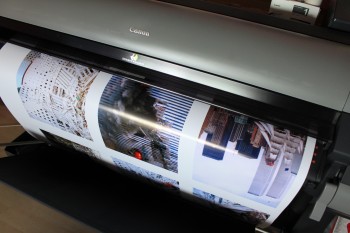Like most of us, Roberto Rabanne was going about his daily business on September 11, 2001 when the world seemed to shatter in an instant. The difference for Rabanne was that he was in mid-town Manhattan on his way to a fashion shoot, camera in hand, when planes struck the World Trade Center.
Though he didn’t know it at the time, Rabanne would have a new photographic mission in the aftermath of the terrorist attack on New York City. He would capture the horror of that day, but would spend weeks documenting the aftermath, choking down the particles that engulfed the area surrounding the World Trade Center to record history.
“For the first five days I was there at Ground Zero; I didn’t get any sleep and inhaled a lot of the crap in the air, but I needed to focus on it and go forward because it was a historic situation that needed to be documented,” explains Rabanne.
The result was an in-depth study in pictures of not only of the tragedy of that day, but the indomitable human spirit that emerged from the ruins. A few years later, Rabanne and the newly-formed World Trade Center Foundation discussed using Rabanne’s work as an exhibit and a memorial at the National September 11 Memorial & Museum when it opens on the tenth anniversary, this coming Sunday, Sept. 11.
“There are a few images from the collection that encapsulate the story with a sense of brevity. It’s the amount of images that’s hard to edit down, as it is can be with anything, so we decided to choose 12 images that tell the story from beginning to end,” says Rabanne. “I discussed with the curatorial staff about doing something other than the obvious, like a book. I’m a photography collector and I like to see the actual pictures, not just in a book form, and I thought that would have value as a powerful and compelling history, as well as an archival print that you can frame that’s an original from the photographer. Those iconic pictures, like Iwo Jima, they are remarkable in that they captured that slice of history. An important thing for photographers is that decisive moment.”
So, instead of a book, the Foundation agreed with Rabanne, and helped him choose the 12 iconic photos for a limited edition box set of 911. A portion of the proceeds from the sale of the box sets would go to the museum. There will also be an exhibit at the museum featuring the 12 photos from the box set. The Special Edition Portfolio is available online at http://911limitededitionphotos.com/.
“The 12 images were carefully chosen by the chief curator of the museum, Jan Seidler Ramirez. One of the toughest things photographers have to deal with is editing their images. She was able to, with professional and careful judgment, choose some powerful images,” says Rabanne.
 The next step was to find the best way to print all the photos. Rabanne wanted to ensure the prints would bring out the details need to tell the story while providing archival durability. After consulting with his LexJet customer specialist, Rob Finkel, Rabanne decided to use LexJet Sunset Photo eSatin Paper as the medium.
The next step was to find the best way to print all the photos. Rabanne wanted to ensure the prints would bring out the details need to tell the story while providing archival durability. After consulting with his LexJet customer specialist, Rob Finkel, Rabanne decided to use LexJet Sunset Photo eSatin Paper as the medium.
LexJet donated the paper used for both the exhibit and the box sets. Canon USA donated inks for Rabanne’s Canon iPF8300. “Thus far it has gone very smoothly, and with the support of Canon and LexJet, it’s a reality. The quality of the paper is excellent, and the machine has been amazing; not a problem, and not a hiccup through the whole process. LexJet was very helpful to help us get the profiles set up right, and we printed in gangs of three-up for a very efficient workflow. The final prints are 13″ x 19″ each,” says Rabanne.

